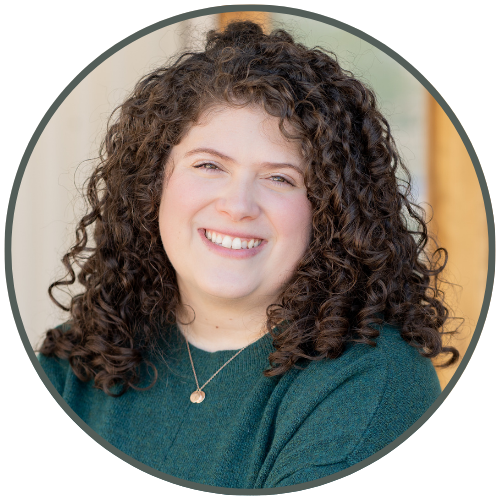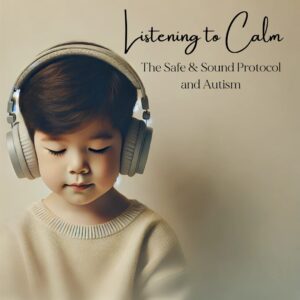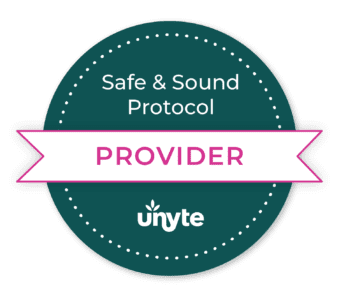Raising a child with autism can be both immensely challenging and deeply rewarding. For many parents, one of the biggest priorities is helping their child feel safe and grounded in a world that sometimes feels overwhelming. While traditional therapies can be essential, some families look for additional support that helps kids feel calmer and more connected. That’s where the Safe and Sound Protocol (SSP) comes in, offering a unique approach to emotional regulation in autism.
What is SSP, and How Can it Help Kids with Autism?
The Safe and Sound Protocol, or SSP, is an evidence-based auditory intervention developed by Dr. Stephen Porges. It involves listening to specially filtered music designed to gently stimulate the vagus nerve—a critical part of our nervous system that influences how we react to stress, communicate, and feel emotionally connected to others. SSP aims to help kids with autism feel more grounded and comfortable, especially in social situations or environments that may otherwise seem overwhelming.
For children with autism, SSP has shown promising effects in areas such as:
- Social Engagement: Improved eye contact, better responsiveness to social cues, and increased comfort in communication. This social engagement therapy for autism approach helps kids feel more open to connecting.
- Emotional Regulation: Fewer meltdowns and increased ability to handle frustration or unexpected changes, which are common challenges in emotional regulation for autism.
- Sensory Processing: Reduced sensitivity to sounds, textures, or lights.
- Anxiety: Some children show signs of decreased anxiety, which makes participating in daily activities easier.
Moving at the Child’s Pace: Why SSP Takes Time
At Cypress Counseling & Wellness, we believe that SSP is most effective when we work with a child’s unique nervous system, rather than trying to push them through a rigid plan. For some kids, the idea of putting on headphones and listening to music can feel uncomfortable or even intimidating. That’s why we move at a pace that respects each child’s readiness. Sometimes, the first goal is simply to help a child feel comfortable putting on the headphones—no pressure to dive into a session until they’re ready.
This process takes patience and flexibility, but it’s worth it. SSP isn’t about fast-tracking results; it’s about creating a foundation of safety that allows real change to happen. When a child feels safe, they’re more likely to be open to the experience, allowing them to move forward at their own pace.
How Does SSP Work?
The SSP process is deceptively simple, yet it can be deeply impactful. Children listen to specific, specially-filtered music through high-quality headphones, usually over a series of sessions. The music is designed to interact with the nervous system, helping kids move out of “fight or flight” mode and into a state of calm. However, it’s not about rushing them through each session—it’s about supporting them in feeling safe with every step.
What you can expect from our approach:
- Preparation: We start with pre-listening exercises to ease the child into the process. This might mean practicing with the headphones for just a few minutes until the child feels comfortable.
- Listening Sessions: These are kept short initially to avoid overwhelming the child. Rather than following a strict timeline, we adjust based on the child’s comfort and needs, gradually increasing as they’re ready.
- Monitoring Progress: Changes may show up quickly or take time to become apparent. We regularly check in with parents, and we’re ready to adjust the approach based on the child’s responses.
- Integration: Often, the benefits of SSP continue unfolding even after the sessions end, as the child’s nervous system slowly adapts to a more regulated state.
Why Focus on Safety and Connection First?
Dr. Porges’ research highlights something called the Polyvagal Theory, which explains how our nervous system has three primary states: calm/social engagement, fight/flight, and shutdown. For children with autism, moving into the calm/social engagement state can take extra care due to sensory sensitivities. SSP helps create that sense of safety by activating the vagus nerve in a gentle way. When kids feel safe, they’re better able to engage, learn, and interact.
At Cypress Counseling & Wellness, we work closely with both the child and parent, making the entire process feel supportive and welcoming. Our goal is to foster a sense of connection that communicates safety at every turn. We know that if we push too hard, we risk triggering a “danger” signal rather than the sense of calm we’re working to build.
What Do Parents and Therapists Say About SSP?
Many parents notice subtle but meaningful changes after SSP. They describe their children as calmer, more socially engaged, and better able to handle daily transitions. Therapists often see SSP as a valuable supplement to other therapies, like occupational therapy or behavioral therapy, because it sets a strong foundation for growth. Kids who feel calm are more likely to benefit from and engage in other forms of support.
“It’s like his system found a new balance,” one parent shared. “It’s not that challenges disappeared, but he just seemed more available to connect and participate.”
Is SSP Right for Every Child with Autism?
Every child’s nervous system is unique, and SSP may not be the right fit for everyone. For some children, the effects are noticeable right away; for others, the shifts are more gradual. At Cypress Counseling & Wellness, we approach SSP with sensitivity to each child’s needs, supporting them in feeling safe every step of the way.
Wrapping Up: Is SSP Right for Your Child?
SSP is not a cure or a quick fix. It’s a process that supports children with autism in feeling more at home in their own bodies, creating the groundwork for growth in social engagement, emotional regulation, and sensory processing. If you’re curious about SSP, we invite you to connect with us to see if it might be a good fit. Together, we’ll go at a pace that respects your child’s unique needs and celebrates each step forward, creating a foundation of safety and connection that allows real growth to happen.
-

Kat Nazaroff, LCSW, LCDC, CDWF, helps people thrive in recovery and build meaningful connections. Trained in EMDR and specializing in addictions, postpartum challenges, and interpersonal therapy groups, Kat draws on psychodynamic, attachment, and mindfulness approaches to tailor each therapy experience. She believes in a collaborative journey toward healing, where clients feel comfortable and supported in the process. When she's not at work, Kat is usually chasing her two little boys or unwinding with a good book, coffee, or crochet.
View all posts
 (281) 305-9387
(281) 305-9387










